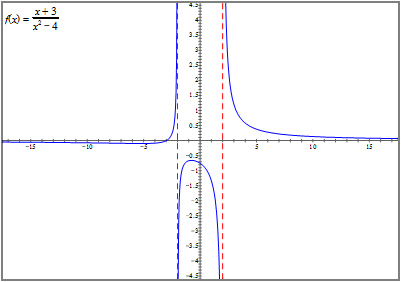

Recall that a rational function is a quotient of two polynomial functions.
r(x) = p(x) divided by q(x) p(x) q(x) , q(x) ≠0, where p(x) and q(x) are polynomial expressions.
The graphs of rational functions can be quite interesting and challenging.
While some rational functions do not:
Some rational functions have horizontal asymptotes at y = 0 (the x-axis):
While others may have a horizontal asymptote elsewhere:
And still other rational function graphs may have slant (oblique) asymptotes, or asymptotes that are parabolic (or some other polynomial function):
And some rational functions may have a hole, or removable discontinuity, on their graph:
In this resource, we will examine some real-life situations that can be modeled using rational functions, and we will analyze the meaning of the rational function’s vertical and/or horizontal asymptote in the context of the problem.

![]() Watch this video for a review of rational functions and how rational functions are used in real world situations.
Watch this video for a review of rational functions and how rational functions are used in real world situations.